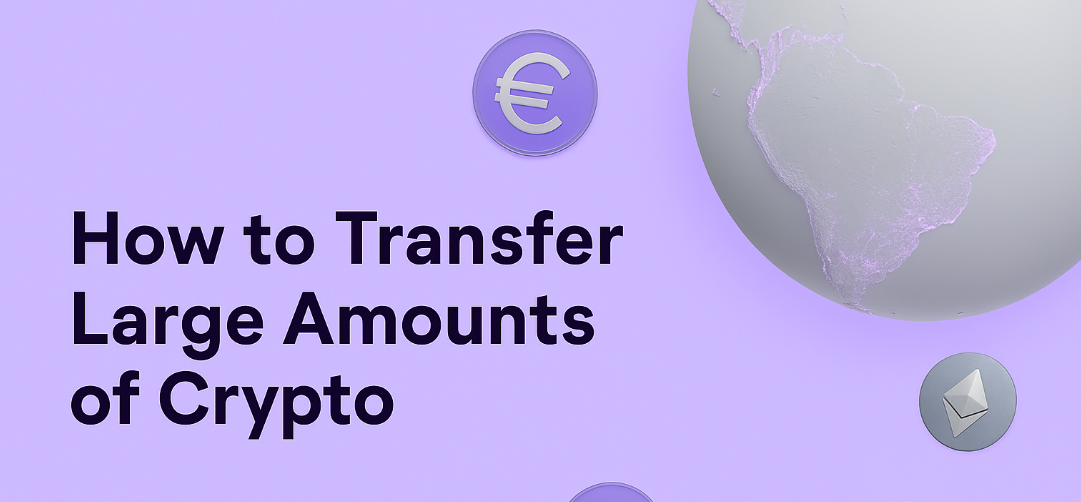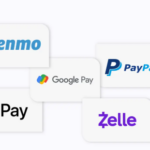In this article, I will cover how to Transfer Large Amounts of Crypto Cheaply. If not done correctly, transferring sizable amounts of crypto can be expensive and pose some risks.
- Understand Crypto Transfer Fees
- How to Transfer Large Amounts of Crypto Cheaply
- Step 1: Pick a Blockchain with the Lowest Fees
- Step 2: Put Your Wallets in Order
- Step 3: Transfer Over a Bridge (if Necessary)
- Step 4: Overcome the ‘Transfer’ Limitation
- Step 5: Maximize the Set Gas Fees
- Step 6: Monitor and Confirm
- Top 5 Platform Where to Transfer Large Amounts of Crypto Cheaply
- Choose the Right Blockchain
- Optimize Gas Fees and Transaction Speed
- Security Best Practices for Large Transfers
- Always Confirm Wallet Addresses
- Offline Wallet Storage and Transfers
- Enabling 2FA
- Multisign Wallets
- Public Wi-Fi
- Tiered Transfers
- Maintenance of Device Software
- Split Transfers vs. Single Large Transfer
- Monitor and Confirm Transactions
- Challenges of Large Crypto Transactions
- Transaction Fees
- Network Congestion
- Cybersecurity Vulnerabilities
- Wallet Restrictions
- Market Manipulation
- Sending to the Wrong Address
- Conclusion
- FAQ
By utilizing blockchains with low transaction costs, minimizing gas fees, and adhering to fundamental security principles, it is possible to achieve a balance that satisfies all parties, including the on-time and secure delivery of cryptos at optimal pricing, even for hefty transfers.
Understand Crypto Transfer Fees
Crypto transfer fees are simply the charges associated with the movement of cryptocurrency, such as Bitcoin and Ethereum, from one wallet or exchange to another. These fees, usually termed as network or miner fees, are paid to the Validators or Miners who deal with the confirmation and processing of the transactions on the blockchain.
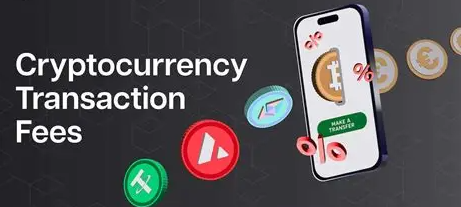
The fees are not fixed and depend on the network, blockchain type, levels of congestion, and the size of the coin. For instance, the cost of transferring Bitcoin or Ethereum during peak hours is usually higher due to high demand.
There are some Blockchains that are much more affordable, which makes them suitable for large Crypto transfers. These fees are important to know as they help avoid the cost of a transaction and overpayment. Planning is needed to make sure that the funds are transferred properly.
How to Transfer Large Amounts of Crypto Cheaply
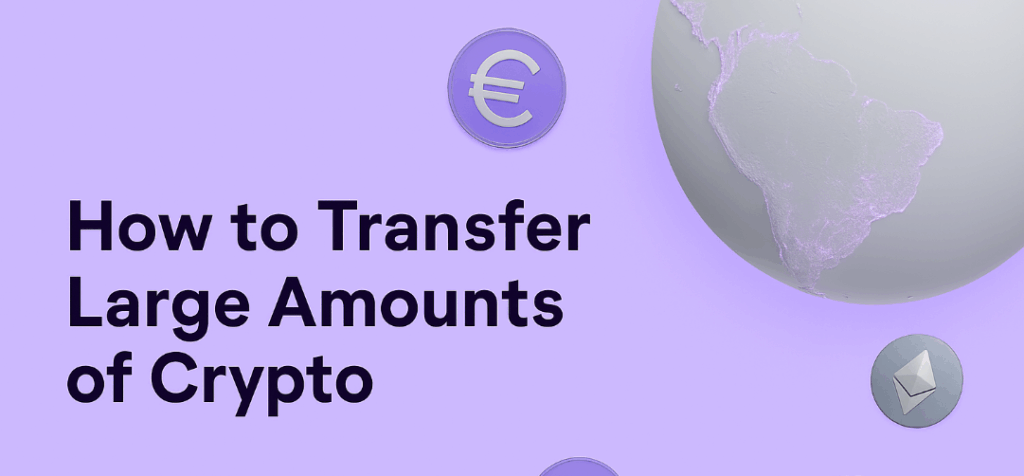
Here is a straightforward guide on how to cheaply transfer huge amounts of crypto using the Polygon network as an example.
Step 1: Pick a Blockchain with the Lowest Fees
- Pick Polygon instead of the Ethereum mainnet, as Polygon has significantly lower network fees.
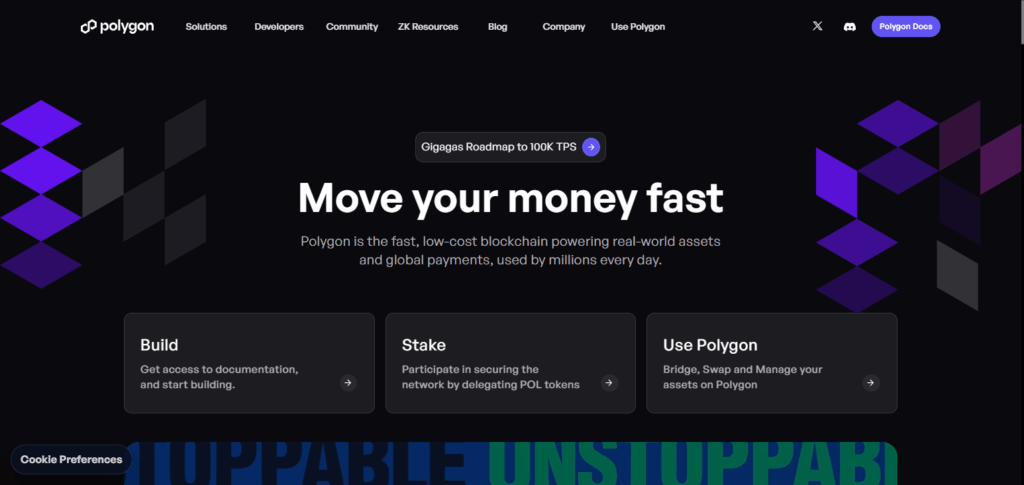
- Ensure both the sender’s and receiver’s wallets can send and receive Polygon (MATIC) transfers.
Step 2: Put Your Wallets in Order
- Get an appropriate crypto wallet, such as MetaMask, or a hardware wallet.

- Make sure the wallet addresses you are using are correct.
Step 3: Transfer Over a Bridge (if Necessary)
- If your crypto is on Ethereum, transfer tokens to Polygon using the Polygon Bridge or similar trustworthy bridges.

- Follow the prompts to approve the transaction.
Step 4: Overcome the ‘Transfer’ Limitation
- If you must send very large amounts, think of sending them in smaller batches, as this will greatly reduce the risk.
Step 5: Maximize the Set Gas Fees
- Monitor the Polygon gas price using a wallet or Polygon gas tracker.
- Pick a transaction fee option with low fees, as delays of a couple of minutes are fine to save money.
Step 6: Monitor and Confirm
- Check the Polygon Explorer to check the transaction and confirm the number of Polygon MATIC.
- Make sure the funds are sent and safely arrived.
Top 5 Platform Where to Transfer Large Amounts of Crypto Cheaply
1. MEXC
MEXC is a great platform for transferring large volumes of crypto, given its low withdrawal fees, high liquidity, and low-cost transfers.

The exchange offers a large selection of cryptocurrencies and networks so users can optimize transfers on the cheapest networks.
The quick, rapid transactions completed by the MEXC Transaction opexing system, reduces the network congestion queue. In addition, large transfers with low cost are also made possible and secure, with the strong MEXC platform and the MEXC anti-fraud systems. This is great for high-value crypto transfers.
2. CoinEx
Due to its remarkably low withdrawal fees and a large number of chains supported, CoinEx is the most cost-effective option for transferring large amounts of cryptocurrency.
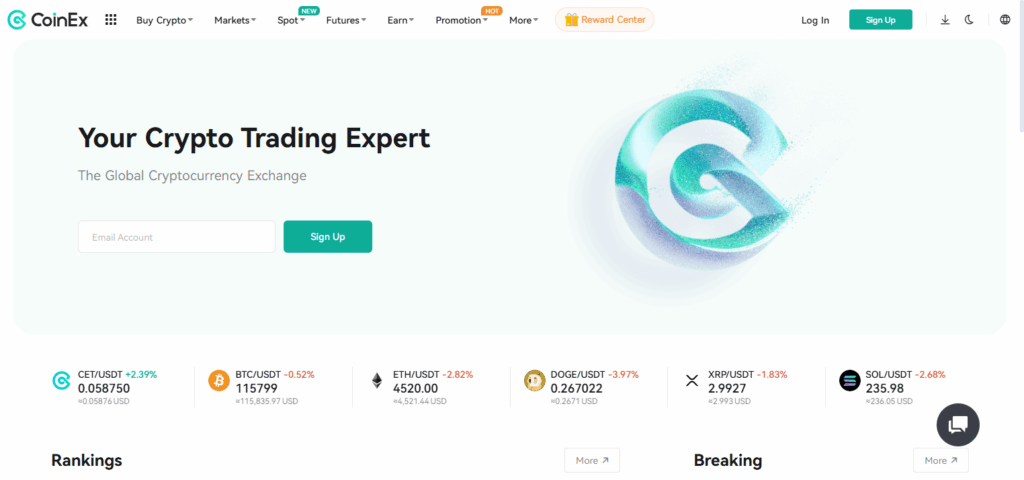
Users may pick between Bitcoin, Ethereum, and other low-cost alternatives to minimize expenses. CoinEx provides adequate liquidity so large transactions can be executed in a timely manner with no slippage.
Withdrawals can be made in a secure manner to ensure the safety of the user’s assets while still taking advantage of CoinEx’s fast infrastructure CoinEx is optimal for large, cost-effective transfers, being the most inexpensive option paired with fast processing crypto transfers.
3. AscendEX
Thanks to its competitive withdrawal fees and blockchain coverage all over the world, AscendEX is perfect for transferring big amounts of crypto at a low cost.
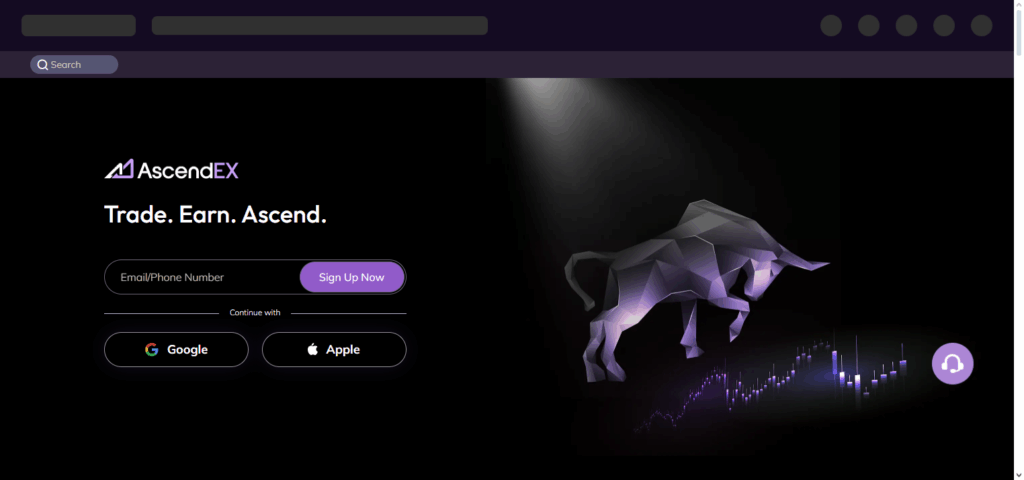
The exchange supports user-defined transactions to low-cost networks for the transfer of large amounts of funds to minimize total transaction fees. High liquidity and rapid transaction processes mean even large transfers get done swiftly and instantaneously without any slippage or delays.
AscendEX’s advanced security features on top of that make the platform a perfect option for users who demand balance between security and low-priced crypto transfers.
4. Bitget
Bitget is perfect for making large crypto transactions and transfers because its fees are low and its multi-chain support is beneficial for users. Users can utilize various blockchains for transfers and determine which is the cheapest.
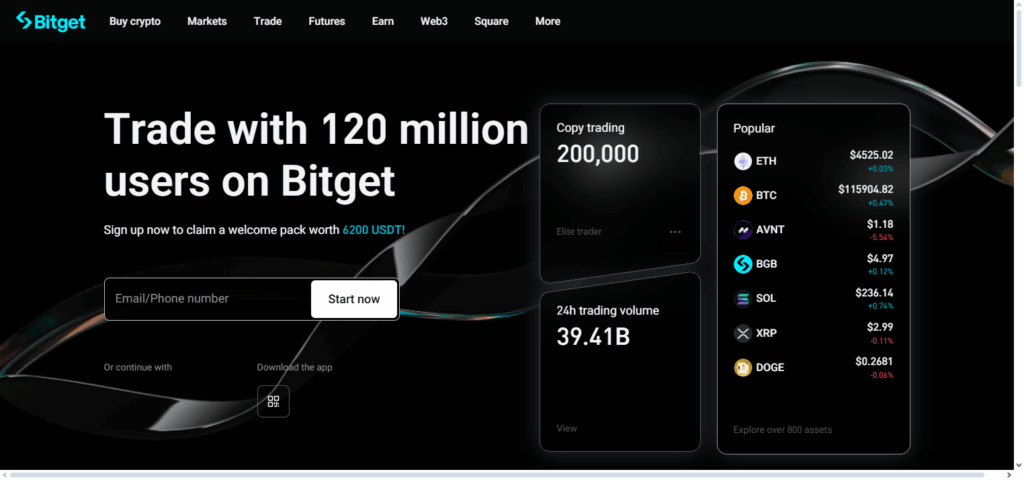
Massive transactions are executed without any delays or the chances of slippage because of Bitget’s high liquidity and fast processing speeds.
Also, the funds are kept safe during the transfers thanks to the platform’s extreme security protocols. That makes Bitget an economical and safe option for its users to transfer large crypto holdings.
5. ProBit Global
ProBit Global is a good option if you want to transfer a lot of crypto, since they have a low withdrawal fee, and have support for a lot of different blockchains. Users of the platform can opt for economical networks, which decreases the transfer costs for high-value transactions.

ProBit Global boasts high liquidity and rapid transaction execution to the point where large crypto moves can be done at any time without slippage. ProBit Global’s wallet infrastructure and those of their competitors have strong anti-fraud measures, which makes any transfer of large crypto holdings both efficient and economical.
Choose the Right Blockchain
Low Transaction Fees – Use Blockchains such as Polygon, Solana, and Avalanche that have a low network fee for high value transfers.
Fast Confirmation Times – Blockchains that are faster decrease the waiting time thereby reducing the risk of late transfers.
High Network Reliability – Check that the blockchain consistently has strong enough uptime & validator/miner support.
Wide Wallet & Exchange Support – Use a blockchain that your sending and receiving wallets or exchanges support.
Security & Reputation – Avoid low credibility networks as they could easier be susceptible to vulnerabilities or scams.
Optimize Gas Fees and Transaction Speed
Monitor Real-Time Gas Prices – Real Time Gas Prices For Etherscan – track and graph gas prices. Use GasNow or similar for other blockchains.
Choose Slower Confirmation for Cheaper Fees – Slower confirmation may take longer, but the cost is a lot less.
Avoid Peak Network Times – Higher congestion means higher gas fees. Off peak times, gas fees are lower.
Batch Transactions When Possible – Certain wallets and exchanges allow batching which is combining transactions, for lower fees.
Use Layer 2 Solutions – Arbitrum, Optimism, or Polygon are quicker and cheaper than the mainnet.
Security Best Practices for Large Transfers
Always Confirm Wallet Addresses
Confirm a recipient address to minimize possible irreversible error.
Offline Wallet Storage and Transfers
Large amounts should be stored and transferred using highly secure wallets kept offline.
Enabling 2FA
2FA protects wallets and exchange accounts from unauthorized access.
Multisign Wallets
In high-risk transactions, requiring multiple signatories to approve reduces possible losses.
Public Wi-Fi
Transfers should only be done on secure and private internet connections.
Tiered Transfers
To minimize loss, send larger amounts in smaller transactions.
Maintenance of Device Software
Wallet apps, firmware, and security devices must be kept current.
Split Transfers vs. Single Large Transfer
| Aspect | Split Transfers | Single Large Transfer |
|---|---|---|
| Risk Management | Lower risk; if one batch fails, others remain safe | Higher risk; any mistake affects the entire amount |
| Transaction Fees | May slightly increase total fees if multiple transactions | Usually fewer fees overall, but network congestion can spike cost |
| Security | Safer; easier to monitor and verify each batch | Higher stakes; any error or attack can be costly |
| Speed | May take longer overall due to multiple transactions | Faster if network allows, but depends on congestion |
| Error Recovery | Easier to correct mistakes or reverse small amounts | Harder to recover; mistakes are permanent |
| Best Use Case | Extremely large amounts, high-risk transfers | Moderate amounts, low-risk scenarios |
Monitor and Confirm Transactions
Use Blockchain Explorers — There are trackers like Etherscan (Ethereum) and Polygonscan (Polygon) where you can track your transaction in real-time.
Check Transaction Status — Confirm whether it is pending, confirmed, or failed.
Confirm Amounts and Addresses — Confirm if the correct amount was received and sent and if it was sent to the right wallet.
Check Network Fees — Confirm if the transaction fee was confirmed; if the fee was low, it may still be unconfirmed.
Resolve Issues Timely — Consult the wallet/exchange support, or you may follow network specific solutions if the transaction is stuck or fails.
Challenges of Large Crypto Transactions
Transaction Fees
Paying for a swap on the Ethereum or Bitcoin network can get expensive, especially when moving large sums of money.
Network Congestion
Transactions can get busy, especially on a Monday where transactions are slower, making confirmation more of a guess than a certainty.
Cybersecurity Vulnerabilities
If a transaction over $1,000 is done, the possibility of a phishing attack is high, especially along with the possibilities of a network or human faults.
Wallet Restrictions
Occasionally, some crypto wallets or exchanges have the option to stop high volume payments, mislabelling them as ‘high risk payments slipstreams’.
Market Manipulation
Cryptocurrencies values are always changing, making it more difficult to track the actual net worth of a transaction undergoing processing.
Sending to the Wrong Address
Causing to any of the two possibilities can lead to permanent ‘working on it’ with no solution.
Conclusion
Moving large crypto assets safely and cheaply requires strategizing with certain tools and ensuring appropriate security measures. Fee-cost solutions such low block fee charges blockchains, factor optimizing gas fees, and fee charging Layer 2 solutions can block transfer costs.
Using a trusted wallet to split transfers additionally enhances security and minimizes risks. Real time monitoring the transfer without the technical problems ensures that funds go to the right location.
Adapting such techniques, crypto holders can now transfer large amounts of the assets without paying transfer fees, delays, and losing funds all at the same time. Crypto transfers have become more affordable and budget-friendly.
FAQ
Can I transfer large amounts of crypto without paying high fees?
Yes, by using low-fee blockchains like Polygon or Solana, Layer 2 solutions, or scheduling transfers during off-peak times, you can reduce network fees significantly.
Is it safer to split large transfers into smaller batches?
Absolutely. Splitting transfers reduces risk, makes it easier to monitor transactions, and helps prevent total loss if an error occurs.
Which wallets are best for large crypto transfers?
Hardware wallets or multisig wallets are recommended for enhanced security, while trusted exchange wallets can be used for convenience.
How do I monitor my crypto transfer?
Use blockchain explorers like Etherscan, Polygonscan, or the respective blockchain explorer to track the status of your transaction in real-time.



